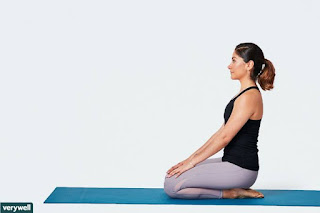 |
SHIN SPLINTS STRETCH |
- As shin splints are result of inflammation or wearing down of connective tissues in relation to shin bone.
- By stretching up the muscles in the shin region will provide relief.
- Most crucial muscle involved in shin splints is anterior tibialis.
- Mechanism behind stretching muscle is that tissues related to the muscle will get used to sudden change.
- That is tissues will adapt to stressful condition and would not wreck in adverse situation.
- Stretching anterior tibialis muscle would provide proper blood supply in the shin region which will ensure nutrition and oxyzen demand of the shin tissues.
- These are few stretches one can do for shin splints.
 |
| Best Shin Splints Stretch |
 |
| Easier Shin splints stretch |
 |
| Shin splints stretch with towel |
 |
| Shin splint strerch against wall |
 |
| Shin Splints stretch over floor |
 |
| Shin splints stretch with partner |
- One must efficiently perform above shin splints stretches.
- Stretch must focus over the shin bone region.
- Pain that occurs while stretching should be beared to a limit and this limit differs for each individual. Holding a stretch for 30 seconds is more than enough.
- Start with easy stretches with help of towel or wall and than eventually go for pro level stretch.
- Its better to do the stretch with a partner who can push you to break your own limits.
SHIN SPLINTS FAQ:
Should you massage Shin Splints?
- Massages benefit you by 2 ways, one is by compression of the tissues which releases tension and enhances blood supply.
- Second is by re-aligning the tissues in proper anatomical position. One should massage shin region but only after the pain have subsidized.
What exercise is good for shin splints?
- Assuming you already have shin splints, its better to rest rather exercising.
- One must perform Exercises which enhances your leg strength.
- Toe curls
- Calf raise
- Calf rolling
- Calf stretch
- Clam shell
Read these interactive articles >
Knee Pain Home Treatment
How To Treat Torn Achilles Tendon
5 Most Effective Exercises For Tennis Elbow
Shoulder Dislocation Treatment
ACL Tear Treatment Explained In Detail
Meniscus Tear Explained in Detail
Ankle Sprain : Explained With Home Treatment
Top Exercises For Hamstring Strain
Physiotherapy For Tennis Elbow
Comment us about your own experiences on injuries. Your comeback story will be featured on this blog in a special section.
Comments
Post a Comment